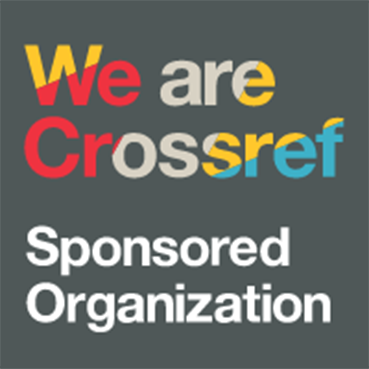Author Guidelines
AHDAF: Journal of Islamic Education invites scholars, researchers, and practitioners to submit original, research-based manuscripts that contribute to the advancement of Islamic education studies. Articles should be unpublished and not under consideration for publication elsewhere. All submissions will undergo a rigorous review process by the editors, editorial board, and blind reviewers. Manuscripts that do not comply with the journal’s formatting or length requirements will be rejected without review.
Articles should be written in Bahasa, English, or Arabic and contain approximately 4,000–6,000 words, including text, tables, figures, notes, references, and appendices. Each submission must include an abstract of about 150–200 words and five keywords.
General Guideline of the Manuscript
The journal applies a single-blind peer-review process. To support this, author names (without academic titles), institutional affiliations, and the corresponding author’s email should appear only on a detachable cover sheet. Manuscripts should be prepared in Microsoft Word, single-spaced, using Cambria 13 pt font, with margins of 3 cm (top and bottom) and 2.5 cm (left and right) on A4 paper size.
Headers should indicate the journal’s name, volume, issue, month, and year. Page numbers should appear at the footer—aligned right for odd pages and left for even pages.
Submission
Manuscripts must be submitted through the AHDAF Online Journal System (OJS) at https://journal.iainlhokseumawe.ac.id/index.php/AHDAF. Articles must not be submitted simultaneously to other journals.
Title
The title should be clear, concise, informative, and engaging, consisting of no more than 100 characters (including spaces). It must be typed in Cambria 14 pt bold with capital letters at the beginning of each main word, except conjunctions and prepositions.
Author(s) Name(s) and Affiliation(s)
List all authors along with their institutional affiliations and email addresses. The corresponding author should be clearly indicated. This information will appear in the published article unless requested otherwise. Use Book Antiqua 12 pt font.
Abstract
The abstract should be self-contained (no figures, tables, equations, or citations), not exceeding 250 words. It must summarize the importance of the study, research gaps, objectives, methods, findings, and conclusions in a single paragraph. Use Cambria 11 pt font.
Keywords
Include a minimum of 3-5 keywords, arranged alphabetically. Keywords may represent research variables, subject characteristics, or theoretical concepts referenced in the article.
Main Body of the Paper
The manuscript should be between 4,000–6,000 words, written in Cambria 13 pt. Sections should be in bold, while subsections should be italicized. Use hyphens consistently and follow the Library of Congress transliteration style for Arabic terms. Personal names should not be transliterated.
Introduction
The introduction should cover the study’s background, context, objectives, research problems, and significant gaps, referencing previous studies preferably from the last ten years. It should constitute 20–35% of the total article length and be presented in paragraph form (not bullet points).
Method
The method section should describe variables, subjects, instruments, research design, data sources, data collection, and analysis techniques. It should also include relevant academic or institutional settings, occupying 10–15% of the article.
Results and Discussion
The results should present data analysis, descriptive statistics, and hypothesis testing, using horizontal lines for tables. Each table should include a number and italicized title placed above it. The discussion should interpret findings, link them with previous research, and engage critically with recent literature. This section should make up 20–30% of the total article length.
Conclusions
The conclusion should clearly and concisely address the research objectives, summarize findings, highlight limitations, and provide recommendations for future studies. It should take up 5–10% of the total article length.
References
Authors must ensure that every source cited in the text appears in the reference list and vice versa. Avoid using non-academic sources such as Wikipedia or personal blogs. References should follow the APA 6th Edition style (Author-Date) and may be generated using reference management tools such as Zotero, EndNote, or Mendeley. Generally, the Chicago Style of referencing is preferred.
Examples
Book References
- Mukhtar, H., & Prasetyo, M. A. M. (2020). Pesantren Efektif Model Teori Integratif Kepemimpinan–Komunikasi–Konflik Organisasi. Yogyakarta: Deepublish.
- Rusmana, A. (2019). The Future of Organizational Communication in The Industrial Era 4.0: Book Chapter Komunikasi Organisasi. Media Akselerasi.
- Van Knippenberg, D., & Stam, D. (2014). Visionary Leadership. The Oxford Handbook of Leadership and Organizations, 241–259.
Journal Article References
- Kalkan, Ü., Altinay Aksal, F., Altinay Gazi, Z., Atasoy, R., & Dagli, G. (2020). The Relationship Between School Administrators’ Leadership Styles, School Culture, and Organizational Image. SAGE Open, 10(1), 215824402090208. https://doi.org/10.1177/2158244020902081
- Mukhtar, M., Risnita, R., & Prasetyo, M. A. M. (2020). The Influence of Transformational Leadership, Interpersonal Communication, and Organizational Conflict on Organizational Effectiveness. International Journal of Educational Review, 2(1), 1–17. https://doi.org/10.33369/ijer.v2i1.10371
- Prasetyo, M. A. M., & Anwar, K. (2021). Assessing Organizational Culture: An Important Step for Enhancing the Implementation of Junior. AL-Ishlah, 13(1), 646–659. https://doi.org/10.35445/alishlah.v13i1.461
Online Articles or News References
- Dinas Pendidikan Dayah Aceh. (2019). Profil Dayah Perbatasan Aceh. Retrieved from https://dpd.acehprov.go.id/...
- Ministry of Religious Affairs. (2021). Statistical Data of Islamic Boarding Schools. Retrieved from https://ditpdpontren.kemenag.go.id/pdpp/statistik?id=11
General Note:
For details not covered in these guidelines, please refer to the American Psychological Association (APA) Quick Guide.


